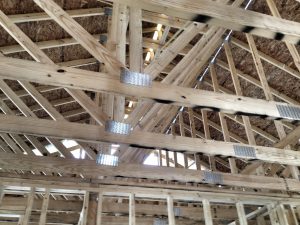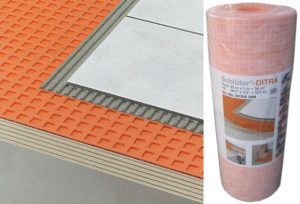Building Code: set of standards established and enforced by local government for the structural safety of buildings.
The building code is simply a set of rules that set minimum standards for construction of structures – the absolute worst possible construction allowed by law. The purpose of the building code is to protect health, safety, and general welfare as they relate to the construction and occupancy of buildings. It is not intended to be the final goal for a project. I remember in the late 90’s when the construction industry was humming along, one local builder advertised on television that he built to code.  That commercial used to frustrate me since everyone is required to build to code – he was spending a lot of money on television ads to say nothing. So why did he do it? Why brag that you are only building to the minimum standard allowed by law? Somehow in our industry, that has become a measure of quality. We have somehow allowed the general public to accept a minimum standard as good enough.
That commercial used to frustrate me since everyone is required to build to code – he was spending a lot of money on television ads to say nothing. So why did he do it? Why brag that you are only building to the minimum standard allowed by law? Somehow in our industry, that has become a measure of quality. We have somehow allowed the general public to accept a minimum standard as good enough.
In the Commonwealth of Virginia, the governing code is called the Virginia Uniform Building Code (USBC). It is an adaptation of the International Building Code and the International Residential Building Code. It sets standards for wind loads (these seem to be on the minds of clients after the devastating tornadoes in the mid-west), snow loads, occupancy, sprinkler, and egress requirements and many other aspects of the built environment. It does nothing, however, to set a standard for the quality, durability, and comfort of the construction. These added requirements can only come from design. You have to look beyond code compliance and ask harder questions of your building materials and technologies to create a lasting, efficient, durable, and healthy built solution. Again, code is simply the minimum allowed by law, it is not quality construction.
Don’t get me wrong, having a minimum allowed by law is a good thing. It gives us all some assurance that when we walk into a building it will remain standing, the roof will remain attached, and the average size person will not fall over railings on the porch. However, building code is slow to adapt to building science and material technology development. The only way to get better buildings is to create demand for better buildings. You have to ask the right questions of your builder and architect to get the desired level of quality you expect and deserve. “Because that is the way we always do it” only works if a new better way to solve the problems it “always creates” has not been found. For instance, there are new ways to lay tile in a bathroom that are much better than the old way of laying it directly on the plywood sub-floor.  Those VOC laden products that worked so well in years past have equal quality and performance substitutes that have eliminated the toxic off-gassing of their predecessors. We know more about air sealing and insulation products that make the old way of insulating a home obsolete and potentially hazardous. Advancing technology and tested solutions are not code mandated, they are driven by builders and designers looking to add quality to their projects through understanding the latest science of building. The “because that is the way we always do it” builders are falling behind in the latest building science understanding. They are simply delivering shiny boxes with little consideration to performance, durability, or occupant comfort.
Those VOC laden products that worked so well in years past have equal quality and performance substitutes that have eliminated the toxic off-gassing of their predecessors. We know more about air sealing and insulation products that make the old way of insulating a home obsolete and potentially hazardous. Advancing technology and tested solutions are not code mandated, they are driven by builders and designers looking to add quality to their projects through understanding the latest science of building. The “because that is the way we always do it” builders are falling behind in the latest building science understanding. They are simply delivering shiny boxes with little consideration to performance, durability, or occupant comfort.
You have all the power in the world to make the construction industry, the built environment, and the homes and offices we spend all our time inside of energy-efficient, healthier, and more durable. You must create the demand for higher performance, better value, and a more sustainable future. Code is not going to solve the problems we face in the coming years. Demand more and I guarantee this industry will meet your call.




